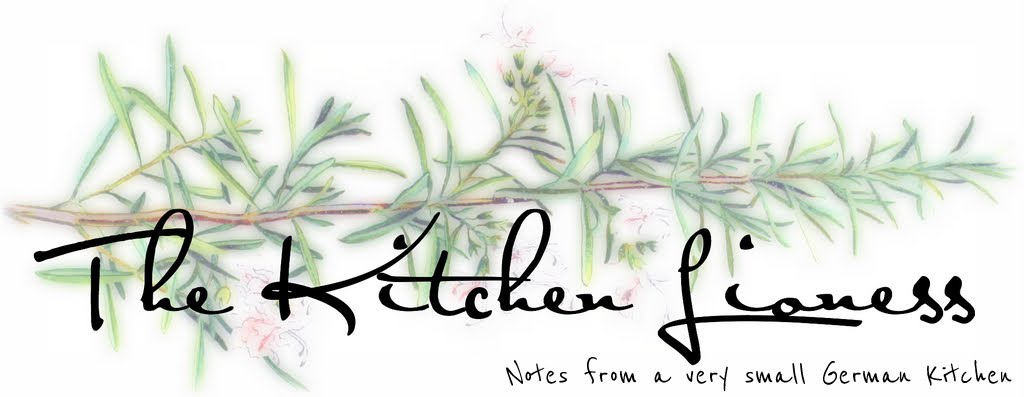The month of July marks the sixth and final month of our second project for our international online cooking group, The Cottage Cooking Club. We cooked our way through a wonderful, family-friendly cookbook written by Hugh Fearnley-Whittingstall, entitled „River Cottage Every Day". And the optional „Love your Leftovers“ by the same author.
This month I prepared five recipes from River Cottage Every Day. I will write about each dish in the order in which I prepared them.
The first recipe for my July post is the Smoked Salmon and Scrambled Eggs on Toast (page 58) from the chapter Making Breakfast.
To this recipe I chose to add fresh Broad Beans with Garden Herbs & Spring Onions - I really love the combination of scrambled eggs and smoked salmon - who doesn´t - but it is even better with those lovely, seasonal broad beans. That´s all I want for breakfast or even lunch.
The second recipe was the Genoise Sponge Cake (page 372) from the chapter Treats. A really nice way to celebrate the delicious end to another chapter of our Cottage Cooking Club adventures. And, may I add, a really useful recipe to have in your repertoire. Easy. Summertime treat. Perfect for a July day.
Lastly I made the always useful Ten-minute Vegetable Stock (page 166) for the delicious Potato and Fennel Soup (page 268), both from the chapter Vegetables Galore.
The combination of flavors - fennel and potatoes - prompted one of my trusted taste testers to burst out "this is my new favorite creamy soup". Truth is, this is a great combination and a reccuring theme in Hugh´s books which we really enjoy. The weather has been more than fallish on some days, so a creamy soup was not out of place in July.
To this creamy soup I not only added some Caramelized Fennel but also the Parsley and Pumpkin Seed Pesto (page 132) from the chapter Weekday Lunch. I much prefer pumpkin seeds in my pesto than pine nuts - we get these amazingly delicious and very healthy dark green Styrian pumkin seeds here that I love to cook and bake with. So, I did not hestitate to make this pesto when I saw Hugh´s recipe.
There are so many ideas for leftover pesto - spread it, smear it, drizzle it, pour it or use it as a dip, pesto is so much more than a pasta sauce and there are so many ways to make the most of it. There are also so many varieties and this one with pumpkin seeds, garlic, parsley, olive oil, Parmesan, sea salt, black pepper and freshly squeezed lemon juice is pretty delicious.
Please note, that for copyright reasons, we do NOT publish the recipes. If you enjoyed the recipes in our series, hopefully, the very talented and enthusiastic members of #The Cottage Cooking Club and their wonderful posts convinced you to get a copy of this lovely book or both books.
To see how wonderful all the dishes from my fellow Cottage Cooking Club members turned out this month, please make sure to take a look at their personal links and to do so, just visit here.
There are so many ideas for leftover pesto - spread it, smear it, drizzle it, pour it or use it as a dip, pesto is so much more than a pasta sauce and there are so many ways to make the most of it. There are also so many varieties and this one with pumpkin seeds, garlic, parsley, olive oil, Parmesan, sea salt, black pepper and freshly squeezed lemon juice is pretty delicious.
Please note, that for copyright reasons, we do NOT publish the recipes. If you enjoyed the recipes in our series, hopefully, the very talented and enthusiastic members of #The Cottage Cooking Club and their wonderful posts convinced you to get a copy of this lovely book or both books.
To see how wonderful all the dishes from my fellow Cottage Cooking Club members turned out this month, please make sure to take a look at their personal links and to do so, just visit here.

